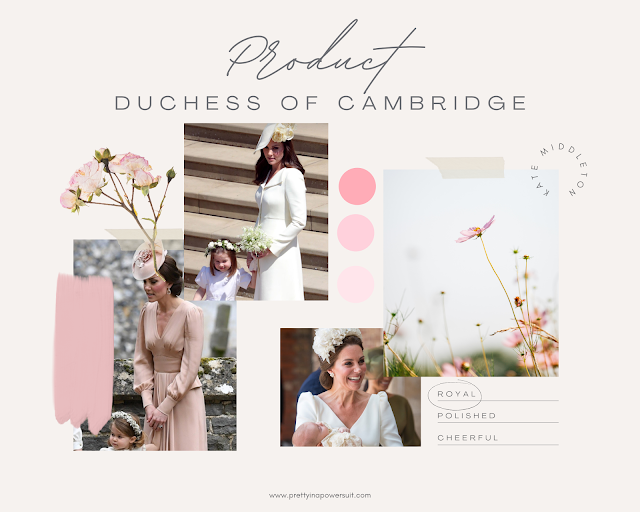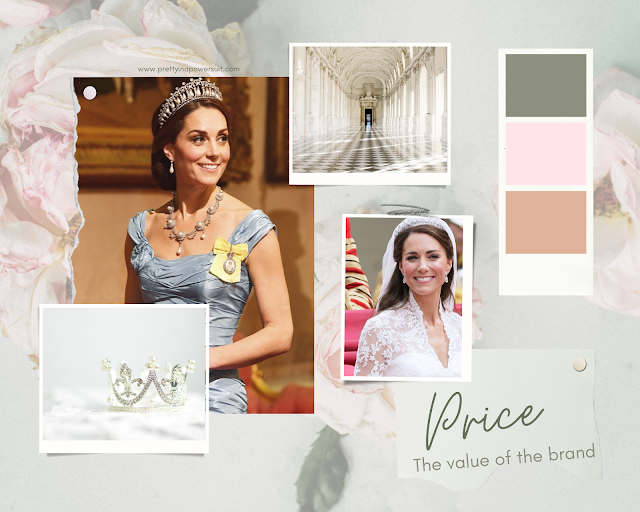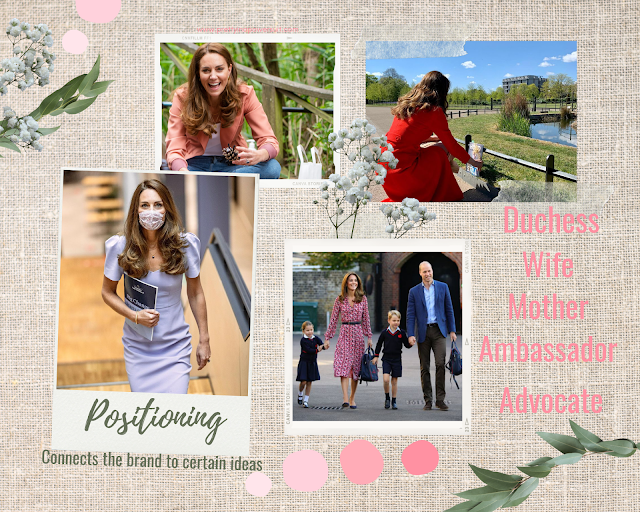Not only are the 7 Ps used in commercials and social media advertising for that pair of shoes you’ve been eyeing, but they can also be used to shape your professional brand. Whether you’re working at a retail store, an engineering firm, a hospital or Buckingham Palace as a Duchess, you have a professional brand.
Your brand is what allows others to gain insight into who you are and what you do. It’s an extension of your reputation and can be purposefully shaped to ensure that it is telling the best and most authentic story about you.
Why does a professional brand matter?
Because your story is what connects you to other people and can help ensure your career journey heads in the direction you want.
Kate Middleton, aka the Duchess of Cambridge, provides endless fashion inspiration for royal fans. However, there is more to her image than meets the eye. Though she is a titled member of the royal family, she, like all of us, has a professional brand. Kate's brand has evolved since her days at university with careful cultivation to make her the Duchess we know today.
To better understand the 7 parts of branding and how to use them for your own brand, we’ll dive into the key aspects of Kate Middleton’s brand as Duchess of Cambridge. As you read through each of the Ps for Kate, think about what each P means in your own brand.
If you need a refresher or more details about each part of the 7 Ps, you can take a look at this original post called "The 7 Parts of Your Professional Brand."
The pictures in the above promotion collage are from her Instagram account and demonstrate Kate's roles within the community. With these images, she was able to post about her work, charitable partnerships and support of key research initiatives in a way that connects directly with her audience. With many of her royal duties being connected to charity work, the promotion of her efforts are closely connected to her positioning (as you'll see below in the positioning section).
Placement is where a product or brand is sold. For Kate, this reflects the physical placement of the royal palaces, her time spent at charities and speaking engagements, as well as her online presence through the royal website and Instagram account.
Packaging in professional branding is made up of external visual cues and fashion choices. One of the key ways to identify Kate’s professional branding and messaging is through her fashion choices. Over the course of her first decade as a Duchess, Kate has stayed true to the preppy style first seen in her university days, while also continuing to elevate her look with classically chic styles. Though elements of her style have evolved over the years, Kate typically packages herself in tailored dresses and heels, along with an array of pretty coat dresses. And more recently has made appearances in stylish pant suits, like the dark green suit worn during an appearance in Scotland.
She has made a point of supporting British brands, with a particular fondness for designer Sarah Burton at Alexander McQueen. She wore the designer on her wedding day and continues to showcase the chic suits and dresses, including the buttercream combo at Prince George’s christening and a silky dress in a shade of blush to her sister Pippa's wedding (both seen in the above collage). By choosing British brands, Kate sends ripple effects through the British economy since anything she wears sells out as fans rush to buy the same items. Her fashion choices surpass the aesthetic and become a beacon for key messages.
While her outfit choices from McQueen send a message to buy local, Kate’s tendency to repeat outfits sends a message of sustainability, frugality and relatability. Her choice to wear the same creamy colored coat dress to weddings in 2006 and 2011 (seen in bottom left photo of collage) demonstrates how good style does not have to be bought newly off the shelf. Instead, a chic look can often be found in our own closets. By investing in high quality and classic pieces she can wear on repeat, Kate indirectly sends a message against fast fashion and making choices that better support the health of the planet.
Positioning connects the brand to key words and ideas. As we already know, Kate is closely aligned with key charities and causes. Using the promotional tools of social media, Kate is able to communicate her position, feelings and support for particular ideas and topics. By posting on Instagram about her journey to help early childhood development, including the launch of The Royal Foundation Centre for Early Childhood, as well as charity visits like her recent one to the Natural History Museum, Kate is communicating what she cares about and ultimately what her brand represents.
Kate also benefits from what is often called the halo effect, where a person or brand is seen more positively because of their connection to another positive person or brand. By placing herself inside the work of childhood development research and outreach, or promoting nature education at the museum, Kate is communicating her stance as an ambassador for positive change and positioning herself as an ally in these efforts for good.
People are the final component of the 7 Ps and include the teams, networks and connections that help a brand succeed. Behind the finished product we see when Kate speaks at an event or pops up on our social media feed, is a team that works together to bring the brand to life. Kate's team includes her personal assistant and stylist, Natasha Archer, who helps craft the amazing looks seen on red carpets and at events. Natasha can serve as Kate's partner in style to make sure all her style choices make the right statement.
Additional people include designer Sarah Burton at the Alexander McQueen label. Though not directly on Kate's everyday team like Natasha, Sarah is part of an extended partnership network that helps craft the brand of Kate Middleton through packaging. Sarah serves as a participant in the brand that Kate is working to communicate.
Kate's people portion of her brand extends beyond her immediate team to the royal family as a whole. Though Kate's professional brand exists on its own, it is also ingrained in the larger image of the Crown and royal institution.


















